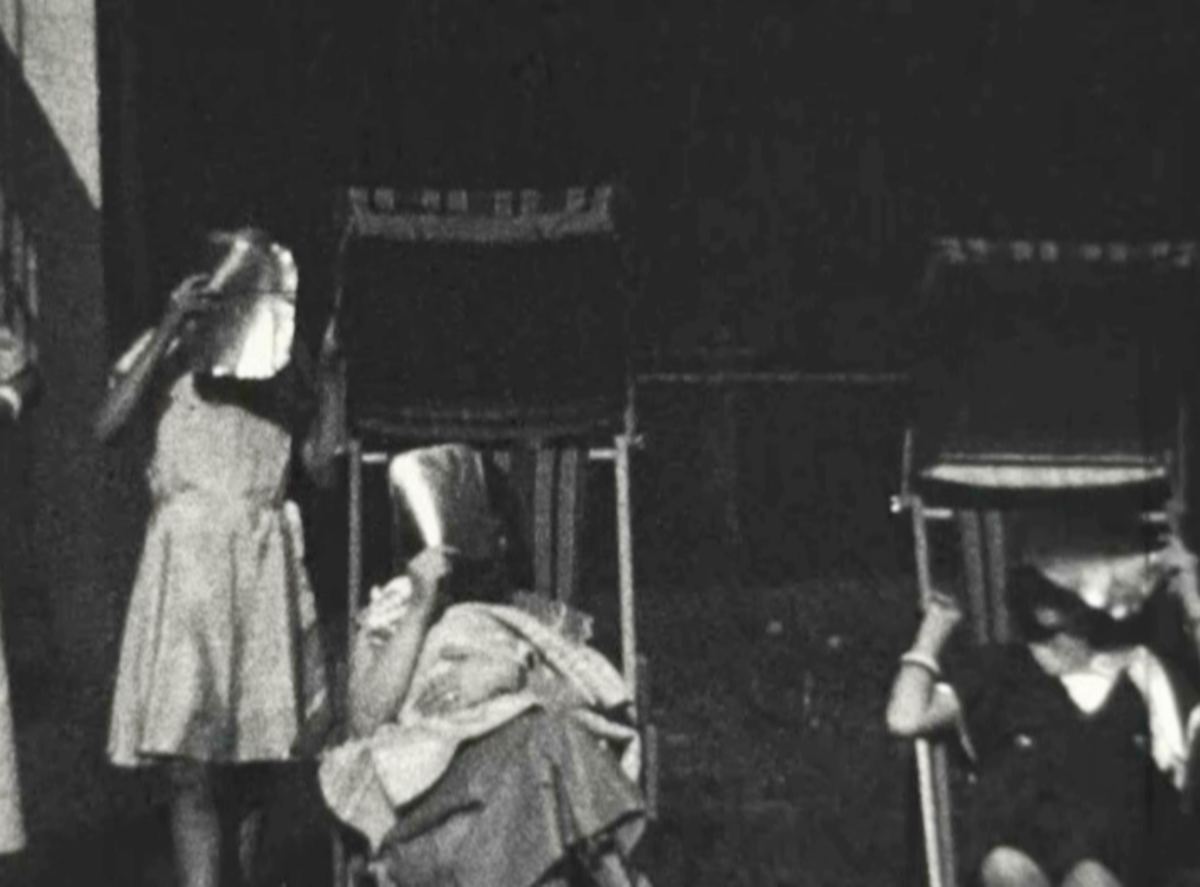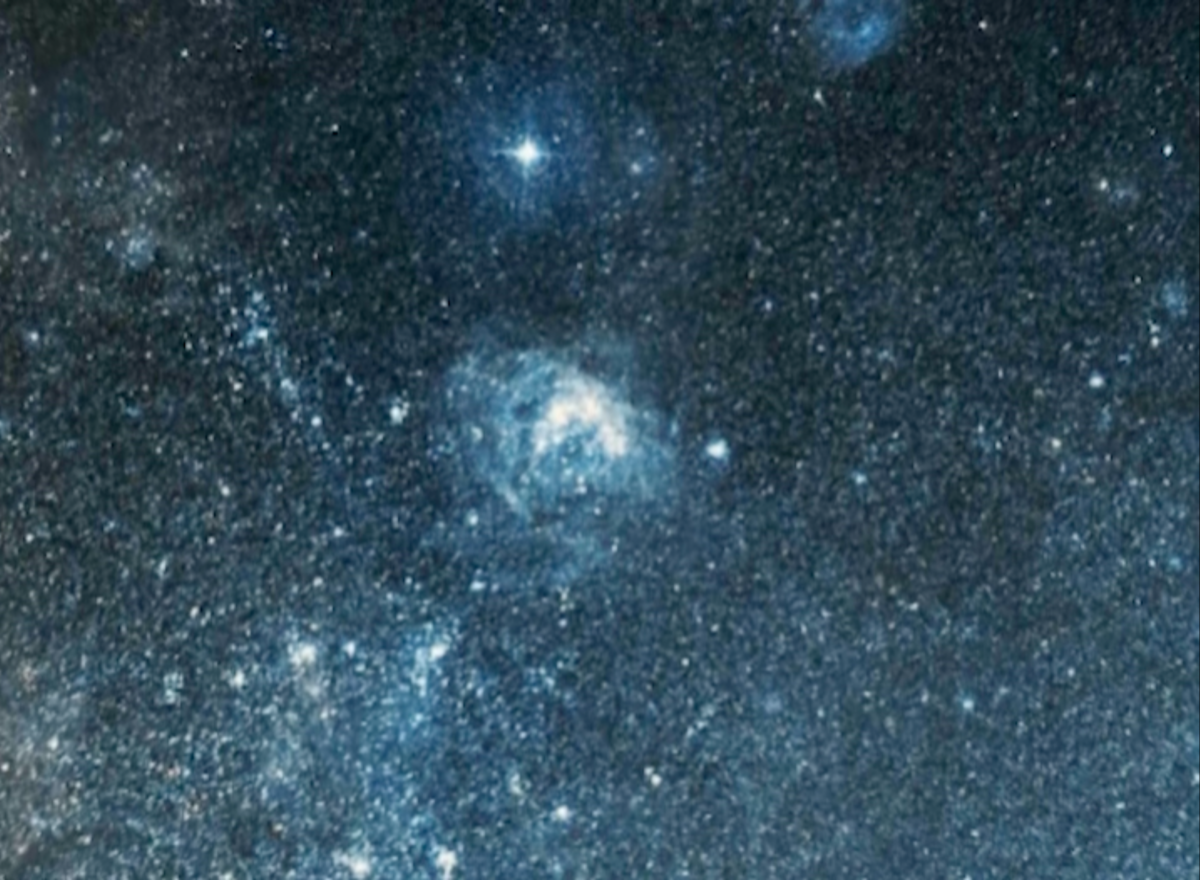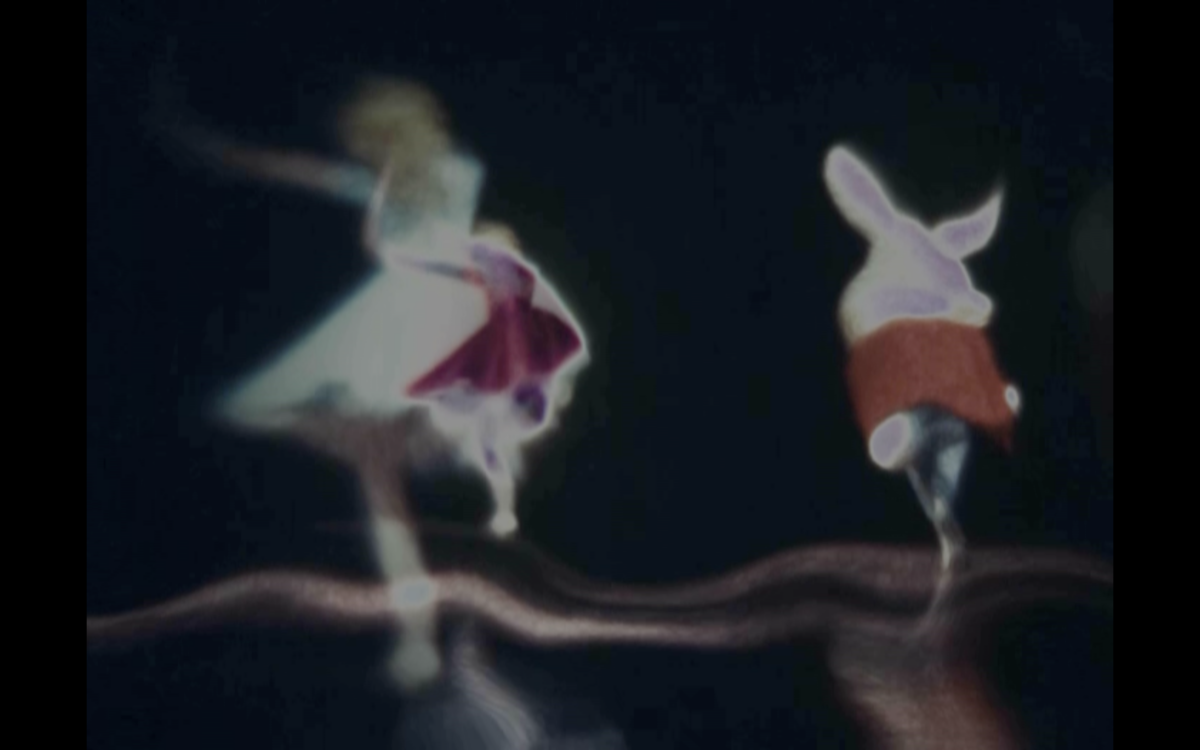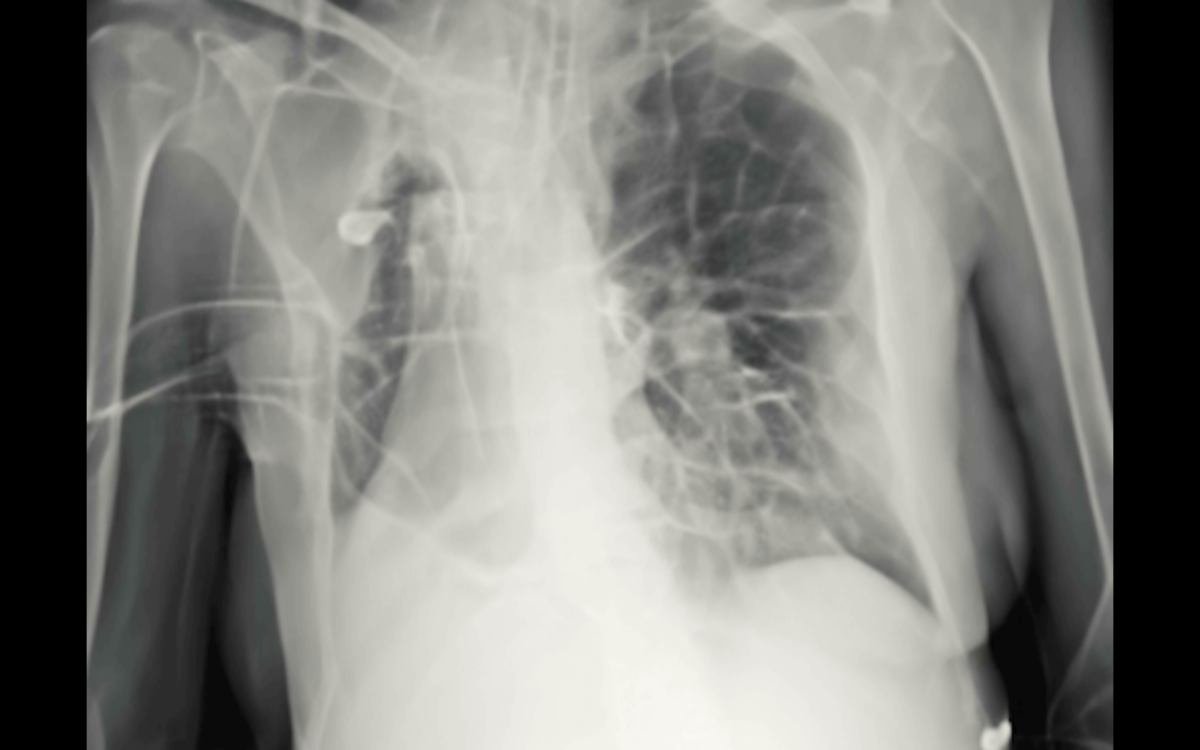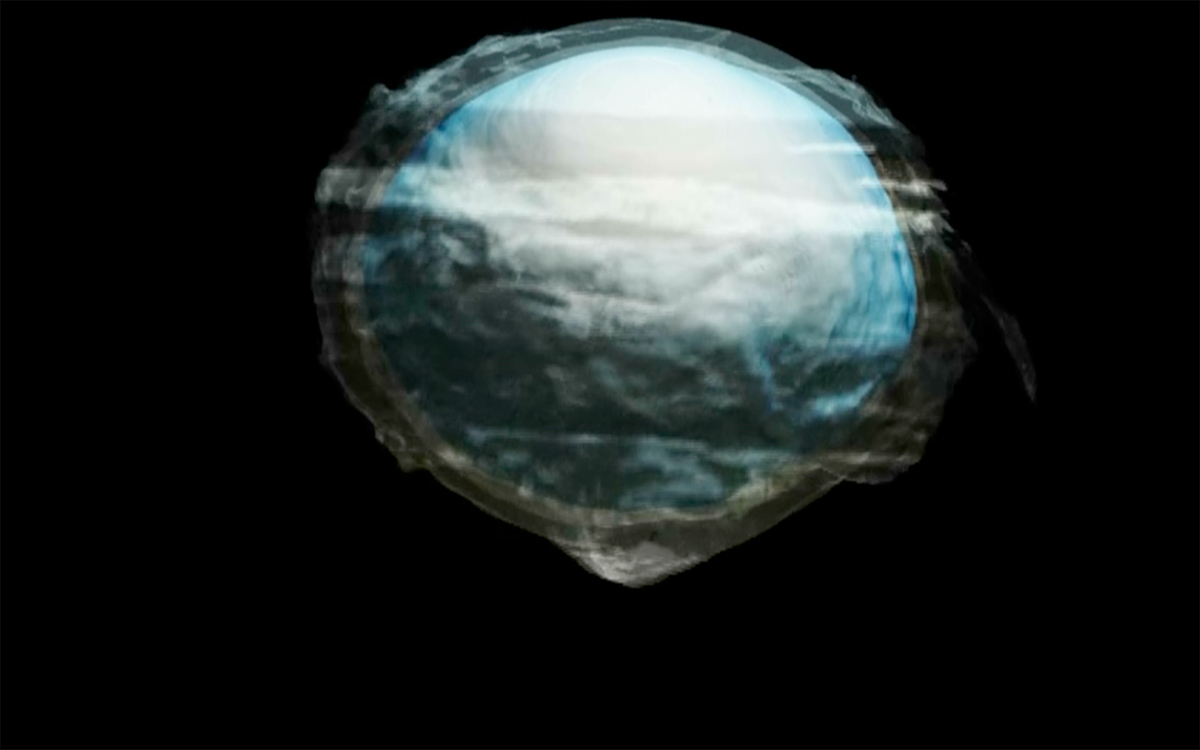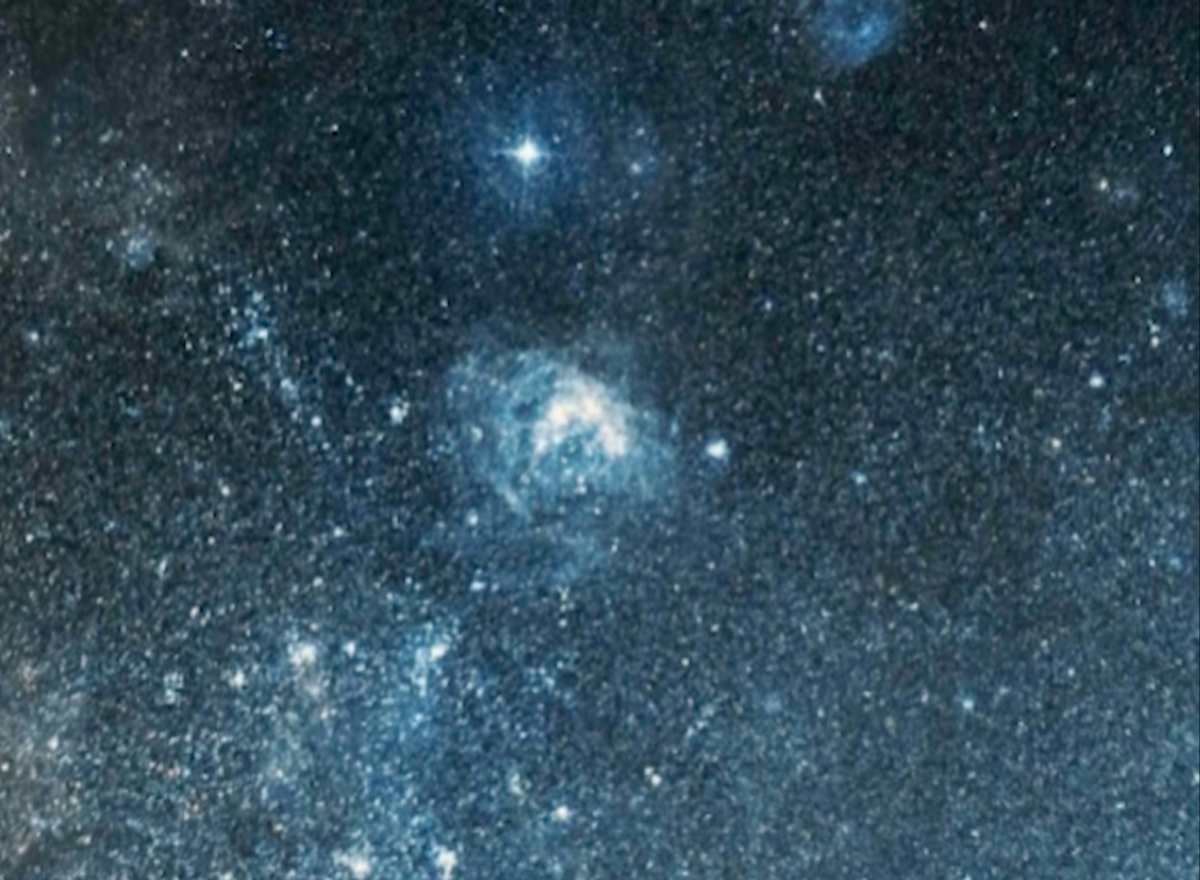
Video, 2024, 10min 10s (exerpt 1min 55s)
With MACHO 80.7443.1718, the most extreme example of heartbeat stars to date was classified in 2023. These stars are a binary system of stars orbiting each other in an elliptical manner. Each monthly orbit causes periodic fluctuations in the brightness recorded by telescopes, so that the resulting light curves are similar in their form to the rhythms of the heartbeat on an EKG machine. The gravity of binary stars creates enormous waves of gas as they approach. The waves generated at MACHO 80.7443.1718 are three times the size of our sun and thus move on an almost unimaginable scale. The larger star in this dyad is nearly thirty-five times the mass of the Sun. Powerful telescopes make it possible to perceive a reality that would otherwise not be there for us. Since practical experimental arrangements in astrophysics would go beyond the physical scope due to the dimensions of the phenomena examined, computer simulations are used for such investigations, which are intended to provide information about the processes in the vastness of space. The universe is constantly changing. This also applies to our own planet, which is estimated to be swallowed up by the expanding sun in five billion years. Astrophysicists have recently been able to observe a similar process in the constellation Aquila using infrared telescopes. The heartbeat stars are also expected to melt together from a pair to form a single star. Tonal translations of Kepler light curves into sound result in different stellar “heartbeats” and form the sonic foundation of the video work. This is repeatedly interrupted by bits and pieces from all-too-familiar pop culture songs that are anchored somewhere in the unconscious, or other collected voice fragments. Excerpts from a lecture by the astrophysicist Dr. Morgan Mac Leod narratively accompany the experimental video work.
From the macroscopic excursion into the outermost and abstract, it goes back to the microcosm of what is innermost within us: our heart. Artificial intelligence has an important application in cardiovascular medicine. An AI trained for this purpose generates artificial X-ray images of people and thus depicts a whole range of different diseases, organ shapes and sizes. In order to deliver equally valid and reliable results for all ethnicities and genders, artificial intelligence must be constantly trained with data sets and then checked accordingly. For medical treatments, these processes represent an almost magical advance: they not only make the hidden interior of the living body visible, but rather the organs can be viewed in their entirety without having to be removed from the body. At the threshold of the widespread use of AI, the question is not just about an expanded perception of our senses, as is the case with the telescope. Rather, we are actually expanding our awareness of what brings new opportunities and risks and is ushering in a new era at top speed.
The Super-8 films from unknown sources collected and digitized from different time periods and regions form an aesthetic contrast. The analogue and privately produced short films, a few minutes long, seem almost innocent. They were created in the initial phase of the establishment of amateur film recordings. The specific quality of the film material makes it clear how much our visually conditioned sense of time is tied to certain appearances and camera techniques. The recordings are a testament to the fascination with time captured on celluloid – not least because of its material transience and the associated risk of disappearance of the fragile documents, they were digitized and transferred to the post-analog age. Photographs of the Wells Cathedral astronomical clock, a historical document of the once dominant geocentric idea of order in the universe, confront scientific errors. The question arises as to what allodoxies we will have to admit to ourselves in the future and how our contemporary worldview will be turned upside down.
Go ask Alice, I think she’ll know.
Computational Star Simulations and Voice (pH lecture): Dr.Morgan Mac Leod, Astrophysicist, Harvard-Smithonian Center for Astrophysics Telescope Images (Star swallowing a Planet): Dr.Kishalay De, Dr. Morgan Mac Leod, Astrophysicists, Harvard-Smithonian Center for Astrophysics AI based Cardiac CT Images and X-Rays: Jun.Prof.Dr.Sandy Engelhardt, Group Artificial Intelligence in Cardiovascular Medicine, Heidelberg University Hospital Home Movies: Unknown Sonification of Heart Beat Stars: Dr. Matt Russo, Astrophysicist, Musican, University of Toronto
